Facial redness is a common dermatological concern that affects individuals across a wide range of skin types and conditions. Whether the underlying cause stems from rosacea, broken capillaries, sun damage, or post-acne inflammation, the persistent appearance of redness can have both physical and emotional repercussions. Fortunately, modern dermatology has developed numerous interventions that go beyond topical creams and temporary cover-ups. Among these, laser treatment for redness on the face has emerged as a scientifically validated and increasingly popular option for patients seeking long-term solutions. As aesthetic technology continues to evolve, understanding the various types of facial laser treatments and how they address different sources of redness becomes increasingly important for both patients and practitioners.
You may also like: How to Choose Skin Care for Fine Lines: Evidence-Based Tips for Healthier, Younger-Looking Skin
The growing interest in laser for skin redness is not purely cosmetic. Redness, particularly when it is chronic or widespread, can contribute to psychological distress, diminished self-confidence, and social withdrawal. From a mental health perspective, such symptoms are not trivial. Individuals living with visible facial redness often report increased anxiety, self-consciousness, and even depressive symptoms, especially when their skin condition is misunderstood or stigmatized. In this context, pursuing facial redness laser treatment is not merely about aesthetics; it’s also a form of psychological self-care and emotional resilience.
Modern dermatological laser systems work by targeting specific chromophores within the skin—most often hemoglobin in the case of vascular redness. These devices emit precise wavelengths of light that selectively interact with blood vessels or pigmented lesions without damaging surrounding tissue. This technology has allowed clinicians to deliver targeted results while minimizing recovery time and side effects. Choosing the right type of laser for redness on face depends on several factors, including the individual’s skin type, the severity and source of redness, and any co-existing dermatological concerns. It is therefore critical to approach laser therapy as a tailored treatment, guided by medical expertise rather than one-size-fits-all assumptions.

Understanding the Different Causes of Facial Redness
Before delving into the types of facial laser treatments, it’s essential to understand the varied causes of redness. This symptom is often multifactorial, with several dermatological and systemic conditions contributing to its appearance. Rosacea, for instance, is one of the most common causes and manifests as persistent redness, flushing, and sometimes acne-like breakouts. It typically affects the central part of the face and may worsen with triggers such as heat, alcohol, spicy foods, or emotional stress.
Other conditions that prompt the need for laser for red marks on face include telangiectasia (spider veins), broken capillaries, and residual post-inflammatory erythema from acne. In some cases, sun damage can lead to diffuse redness or visible vessels, especially in fair-skinned individuals. Each of these conditions may require a different approach when it comes to laser redness removal. Thus, a thorough diagnosis is essential to ensure that the selected laser targets the correct layer and component of the skin.
Additionally, red spots or patches may result from allergic reactions, seborrheic dermatitis, or eczema—conditions that may not respond well to laser unless underlying inflammation is first controlled. In such cases, treating the root cause takes precedence, and laser therapy may be used later as an adjunct. This underscores the need for an experienced dermatologist to guide the treatment plan. Without addressing the underlying pathology, even the most advanced laser for red spots on face may yield suboptimal or temporary results.
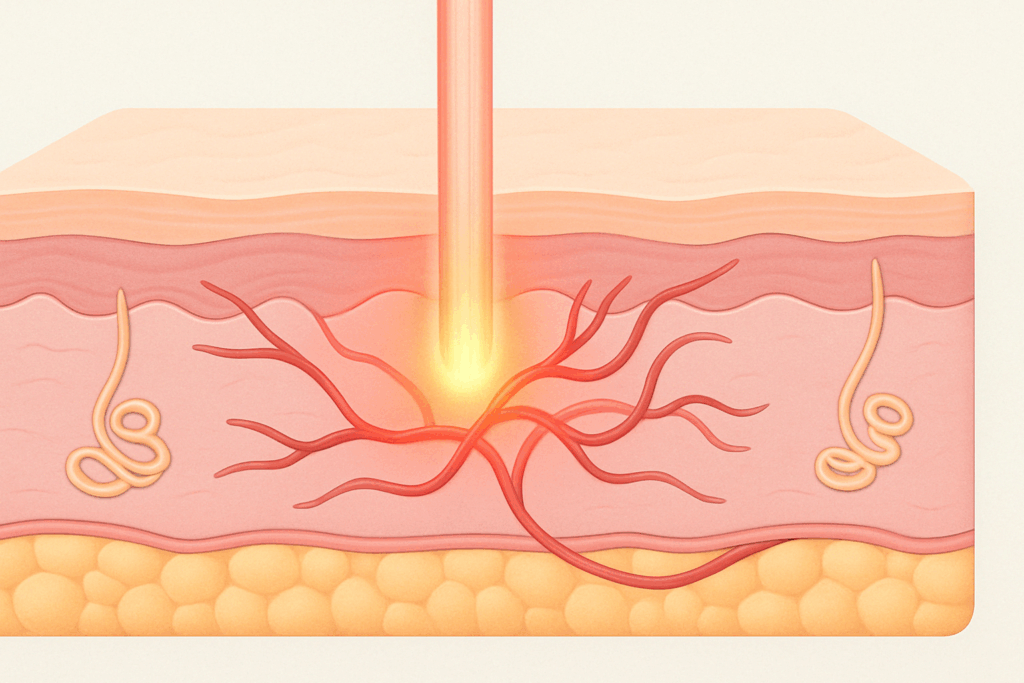
How Laser Technology Targets Redness
Laser systems designed for skin redness operate on the principle of selective photothermolysis. This means they use specific wavelengths of light that are absorbed by targeted structures—in this case, hemoglobin in blood vessels—causing thermal injury that leads to coagulation and eventual reabsorption by the body. The surrounding tissue remains largely unaffected, which makes laser treatment for red spots on face a precise and safe procedure when performed by qualified professionals.
One of the most widely used technologies in this field is the pulsed dye laser (PDL), particularly effective for conditions like rosacea and broken capillaries. PDL emits light at 585 to 595 nanometers, targeting superficial blood vessels and leading to a reduction in redness over several sessions. Another popular option is the intense pulsed light (IPL) system, which, though not technically a laser, uses a broad spectrum of light to address redness, pigmentation, and even textural concerns in one treatment series. IPL is often considered a versatile choice, especially for individuals with mixed skin concerns.
For deeper vascular lesions or more stubborn redness, newer generation lasers such as the Nd:YAG (neodymium-doped yttrium aluminum garnet) may be employed. These penetrate deeper into the dermis and can treat larger vessels that are beyond the reach of surface-level lasers. The use of fractional lasers has also gained momentum, particularly in cases where redness is accompanied by scarring or textural irregularities. These devices create controlled micro-injuries that promote collagen remodeling while minimizing downtime.
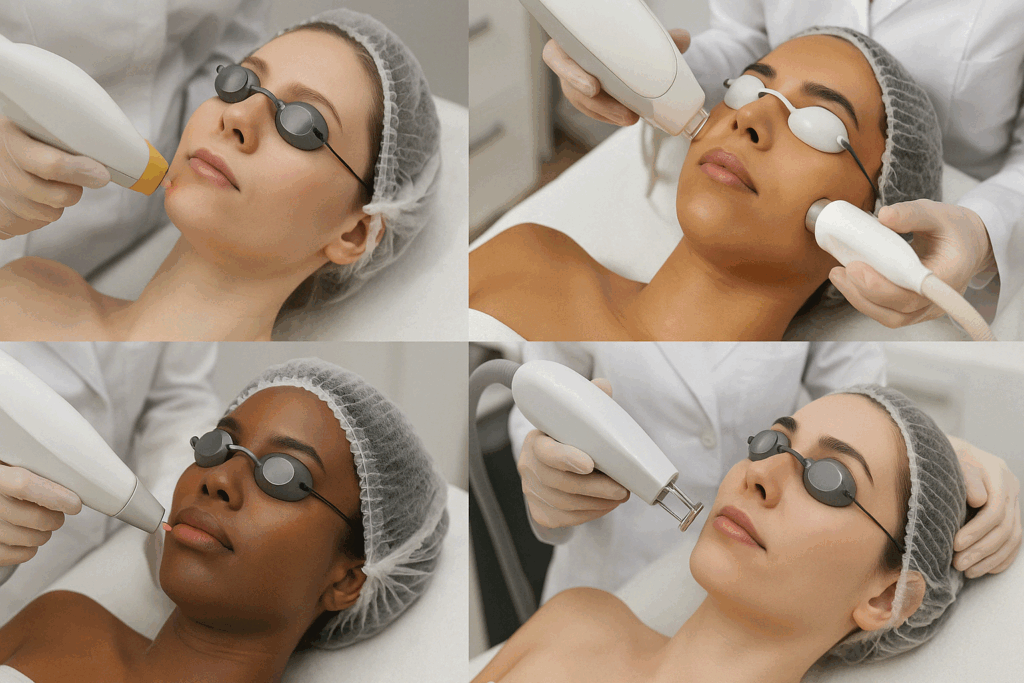
Types of Facial Laser Treatments and Their Specific Benefits
Among the different laser treatments for face, the choice often comes down to the depth of penetration, wavelength, and individual skin response. As mentioned, pulsed dye lasers are considered the gold standard for many vascular issues, including persistent redness and superficial broken capillaries. They offer excellent efficacy with relatively low risk, although multiple sessions are typically needed to achieve optimal results.
Intense pulsed light, while technically not a laser, deserves mention due to its popularity and effectiveness. Its broader wavelength range allows it to target both redness and pigmentation, making it an excellent choice for individuals who may have sunspots or uneven tone in addition to redness. However, IPL may not be suitable for darker skin tones, where the risk of hyperpigmentation is higher.
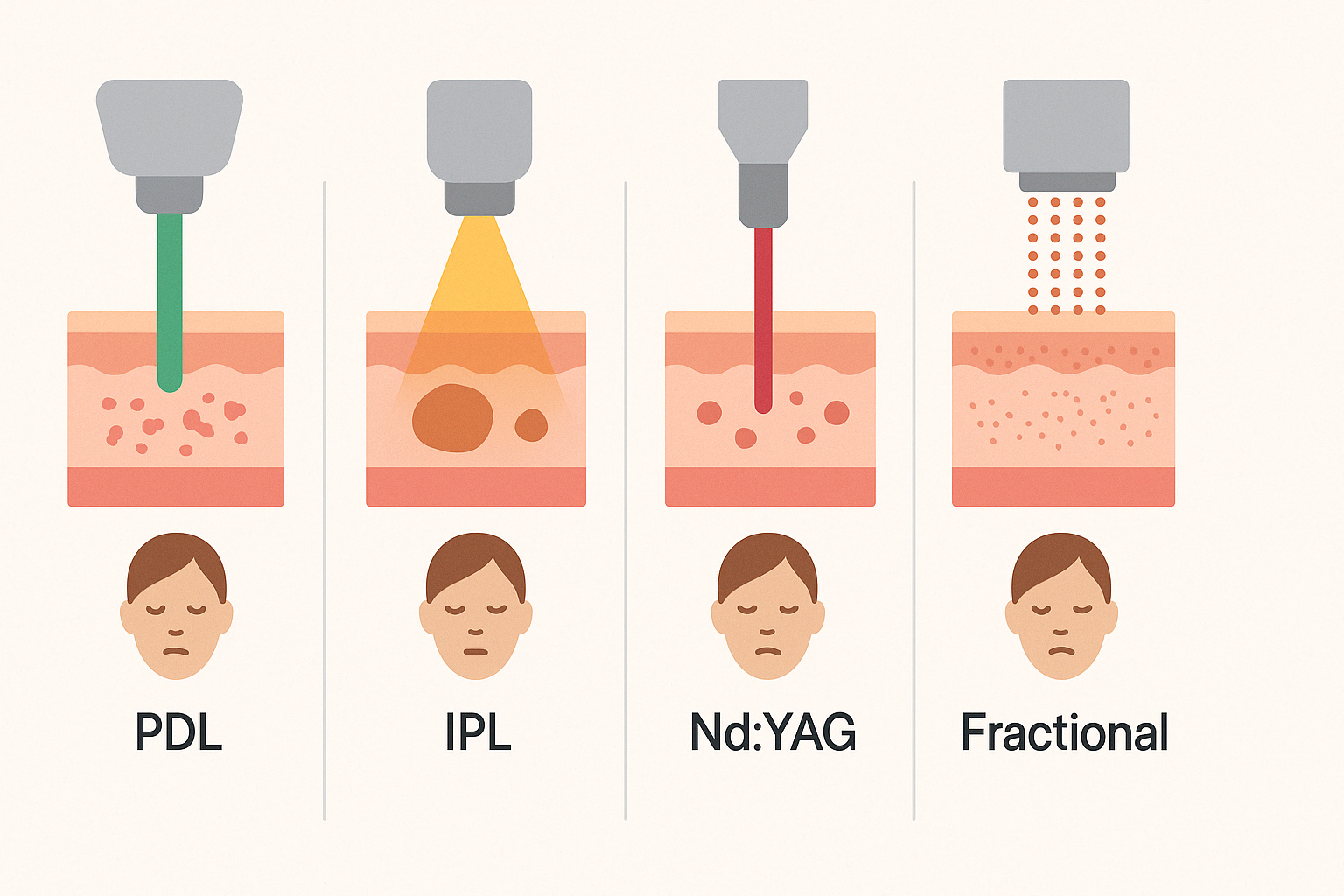
Nd:YAG lasers are more aggressive and penetrate deeper, which makes them suitable for thicker or more complex vascular lesions. These lasers are often used in combination with other therapies, including topical medications or microneedling, to enhance results. CO2 and erbium lasers, though more traditionally associated with resurfacing, are occasionally used in patients whose redness is tied to acne scarring or skin texture issues. In such cases, the dual benefit of reducing redness and improving skin smoothness can be a compelling reason to pursue laser for red marks on face.
Fractional non-ablative lasers offer a middle ground between aggressive resurfacing and superficial treatment. These systems create microthermal zones that trigger skin renewal while leaving surrounding tissue intact. They are especially useful when addressing diffuse redness in combination with early signs of aging, offering subtle tightening and rejuvenation alongside redness reduction. With such a range of tools available, a comprehensive consultation becomes imperative to determine which laser for skin redness is most appropriate for each unique case.
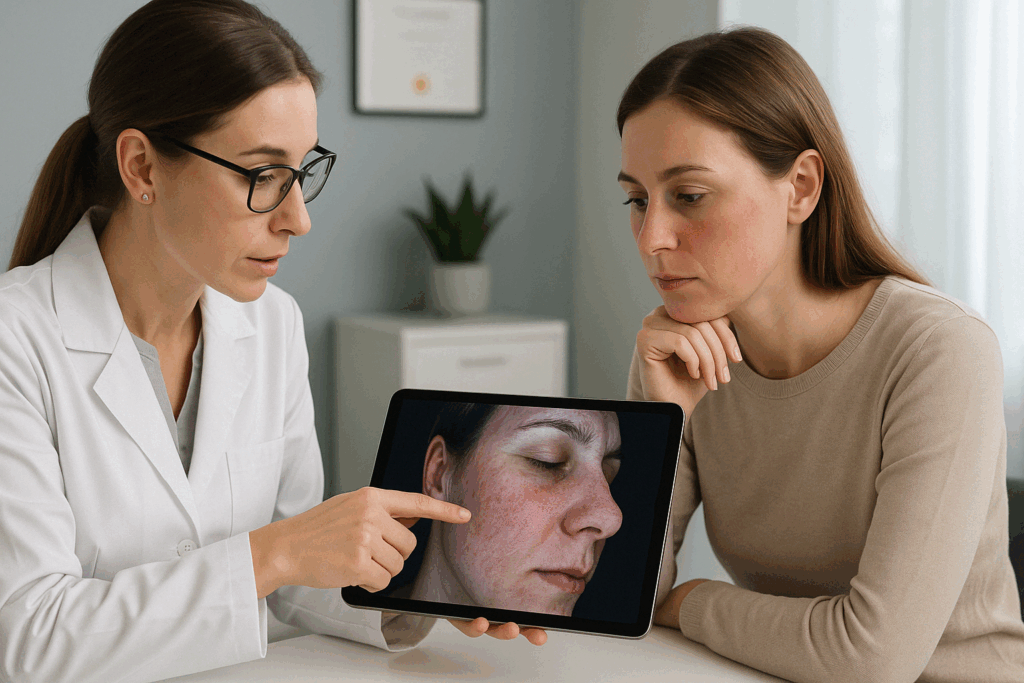
Preparing for Facial Laser for Redness: What Patients Should Know
Preparation for facial laser treatments involves more than just booking an appointment. To maximize safety and results, patients are typically advised to avoid sun exposure, tanning beds, and any products that may increase skin sensitivity, such as retinoids or exfoliating acids, in the weeks leading up to treatment. A full skin assessment should be performed by a board-certified dermatologist to identify any contraindications, including active infections, pregnancy, or a history of keloid scarring.
Skin phototype—classified by the Fitzpatrick scale—plays a crucial role in determining the suitability of different laser modalities. For example, individuals with darker skin tones may be at increased risk of post-inflammatory hyperpigmentation, which makes certain lasers less advisable. In such cases, alternative strategies or modified settings can be used to enhance safety. Patients should also disclose any medications they are taking, as certain drugs like isotretinoin or blood thinners may complicate healing or increase risk of bruising.
On the day of the procedure, skin should be clean, makeup-free, and free from any topical agents. Depending on the type of laser used, a numbing cream may be applied beforehand to minimize discomfort. Protective eyewear is always provided, and cooling systems are often integrated into the laser handpiece to further enhance comfort and protect the epidermis. Following these preparatory steps diligently can significantly improve outcomes and reduce downtime associated with laser treatment for red marks on face.
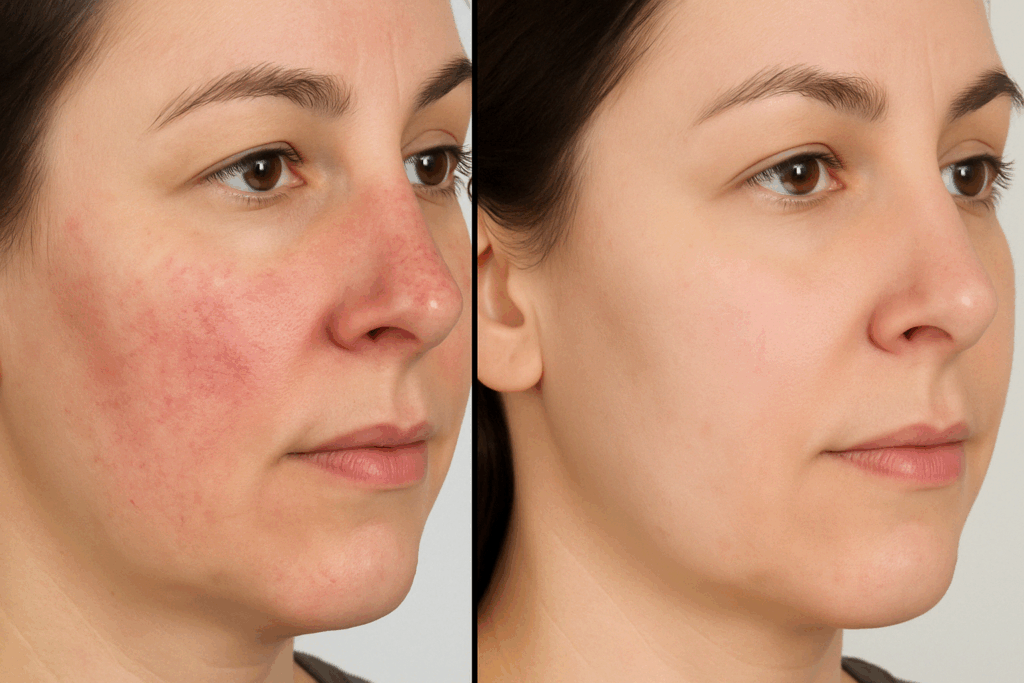
What to Expect During and After Treatment
Laser for redness on face is typically performed in a clinical setting and may take anywhere from 15 to 60 minutes, depending on the extent of the area being treated. Most patients describe the sensation as a rubber band snapping against the skin, although this varies depending on individual pain thresholds and the specific laser being used. Cooling systems, numbing agents, and shorter pulse durations have made the experience much more tolerable than in earlier generations of laser technology.
Post-treatment, it is common to experience some degree of redness, swelling, or mild bruising—particularly when vascular lasers are used. These effects usually subside within a few hours to a few days. Proper aftercare is essential and includes gentle cleansing, moisturizing, and sun avoidance. Sunscreen with broad-spectrum protection is non-negotiable, as treated skin is more vulnerable to UV damage. Patients are also advised to avoid strenuous exercise, saunas, or hot showers for at least 24 hours post-procedure to minimize inflammation.
Results from facial laser for redness may not be immediate, particularly when targeting deeper vessels or chronic conditions like rosacea. A series of treatments spaced several weeks apart is often necessary to achieve lasting improvement. That said, many patients report a noticeable reduction in redness and a more even skin tone after just one or two sessions. The psychological impact of these visible improvements should not be underestimated, especially in individuals whose self-esteem has been compromised by persistent facial redness.
Long-Term Benefits and Psychological Impact
Beyond the visible transformation, the long-term benefits of laser redness removal extend into psychological well-being. Numerous studies have highlighted the emotional burden that skin disorders can impose, with links to depression, anxiety, and social avoidance well documented in the literature. By improving skin appearance, laser treatment can play a role in restoring confidence, improving mood, and enhancing overall quality of life.
It is also worth noting that regular maintenance treatments and a consistent skincare routine can prolong the benefits of laser therapy. Patients who combine facial laser for redness with topical anti-inflammatories, moisturizers, and photoprotection often see better and more durable results. This integrative approach reflects a broader shift in dermatology toward personalized, patient-centered care that considers not just the skin but the person within it.
Laser for red spots on face is not a panacea, but it is a powerful tool in the hands of trained professionals. When appropriately indicated and skillfully applied, laser treatment for red spots on face can address not only the cosmetic concern but also the emotional and social challenges that often accompany visible skin issues. The relationship between skin health and mental health is complex, but interventions that improve one often support the other in meaningful and measurable ways.
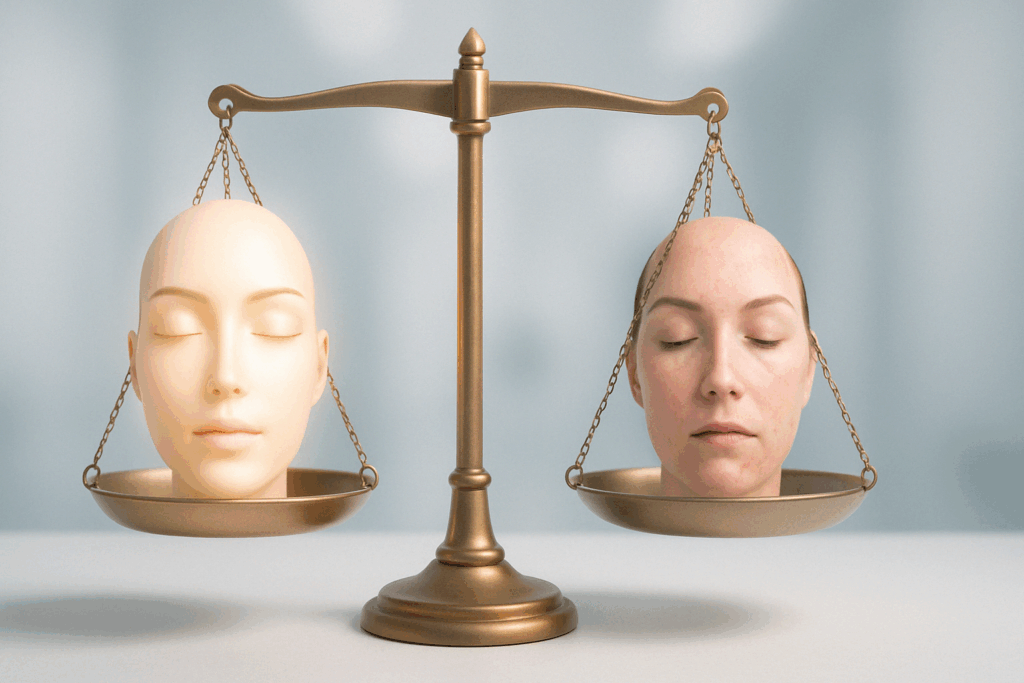
Understanding the Risks and Limitations
As with any medical procedure, laser treatment is not without risks. Potential side effects include hyperpigmentation, hypopigmentation, burns, scarring, or infection, particularly if aftercare instructions are not followed or the treatment is performed by an inexperienced provider. For this reason, it is crucial to seek care from board-certified dermatologists or licensed professionals with specific training in laser technology. Patient education is equally important; understanding what laser for redness entails helps set realistic expectations and fosters shared decision-making.
Cost is another consideration. Because red skin laser treatment is often categorized as a cosmetic procedure, it may not be covered by insurance, leaving patients to shoulder the financial burden. Nevertheless, when compared to the long-term cost of topical treatments, camouflage makeup, and ongoing dermatology visits, many find the investment worthwhile.
Finally, not everyone is a candidate for laser therapy. As mentioned earlier, certain skin conditions must be controlled before treatment can commence, and individuals with unrealistic expectations may benefit more from counseling or non-invasive alternatives. A careful screening process ensures that laser for skin redness is both appropriate and likely to be effective for the individual in question.
Choosing the Right Laser for Redness: A Personalized Path Forward
The decision to pursue laser treatment for redness on face should be grounded in medical expertise, personal goals, and an honest assessment of the risks and benefits. With numerous devices available—from pulsed dye lasers and IPL to fractional and Nd:YAG systems—patients have more choices than ever before. This diversity, however, also necessitates thoughtful guidance from experienced professionals who understand the nuances of skin biology, laser physics, and patient psychology.
Consultation should be a collaborative process, involving a thorough examination of the skin, discussion of medical history, and a clear explanation of available options. Patients should feel empowered to ask questions, seek second opinions, and review before-and-after images of similar cases. Education is key to ensuring that patients understand what facial laser for redness can and cannot do.
Ultimately, the most successful outcomes arise from treatments that are tailored, not templated. Whether the goal is to address diffuse flushing, minimize post-acne red marks, or reduce the impact of rosacea, laser for red spots on face offers a promising avenue for transformation. And as research continues to refine techniques and expand options, the future of red skin laser treatment looks brighter than ever.
Frequently Asked Questions: Laser Treatment for Facial Redness
1. Can laser for red marks on face be combined with other dermatological treatments for better results?
Yes, combining laser for red marks on face with other dermatological therapies can enhance results, especially in cases where multiple skin concerns are present. Dermatologists may recommend pairing facial laser for redness with topical anti-inflammatory agents, vascular creams, or even chemical peels to accelerate healing and reduce inflammation. Microneedling is another adjunctive treatment that can promote collagen production, which complements the effects of laser for skin redness by strengthening capillaries and improving texture. When used strategically, combination therapy may reduce the number of sessions needed and extend the longevity of results. However, treatments must be carefully timed and personalized to avoid overlapping irritation or excessive skin sensitivity.
2. How does emotional stress affect the results of facial redness laser treatment?
Emotional stress plays a surprising but significant role in how well laser for redness performs, particularly for those with stress-sensitive conditions like rosacea. Stress can trigger inflammatory cascades that dilate blood vessels and negate the vasoconstrictive effects of laser redness removal. Incorporating stress-management strategies such as mindfulness, biofeedback, or cognitive behavioral therapy may enhance the skin’s response to treatment. Some dermatology practices even collaborate with mental health professionals to address the psychosomatic components of facial redness. By reducing emotional triggers alongside receiving laser treatment for redness on face, patients may achieve more consistent and sustainable outcomes.
3. Are there differences in how men and women respond to laser for skin redness?
While both men and women can benefit from laser for red spots on face, there are subtle differences in skin physiology that may affect treatment outcomes. Men typically have thicker dermal layers and higher collagen density, which can sometimes require more aggressive settings or additional sessions to reach target vessels. In contrast, women may be more susceptible to hormonal fluctuations that influence redness levels, necessitating ongoing treatment to maintain results. Hair density, grooming habits, and skincare routines also differ, which can impact post-laser healing. These factors make it essential for clinicians to tailor laser treatment for red marks on face based on gender-specific skin characteristics and lifestyle.
4. Can laser for red spots on face be used on individuals with autoimmune skin conditions?
Laser treatment for red spots on face may be cautiously considered for individuals with autoimmune skin diseases like lupus or dermatomyositis, but it requires specialized oversight. These conditions can present with facial redness that mimics rosacea or vascular dilation, but the underlying pathology is systemic and often immune-mediated. While some non-ablative types of facial laser can be used to improve appearance, triggering a flare through thermal stimulation is a concern. Before proceeding with any red skin laser treatment, dermatologists must consult rheumatology guidelines and closely monitor immune markers. In some cases, laser for redness on face may be appropriate only during remission periods when the immune system is stable.
5. How do environmental factors influence the success of laser treatment for red marks on face?
Environmental exposures—particularly UV radiation, pollution, and climate extremes—can significantly affect the outcomes of facial redness laser treatment. Sun exposure not only increases the risk of post-inflammatory hyperpigmentation but can also reactivate vascular dilation, which counteracts the effects of laser for skin redness. Pollution contributes to oxidative stress, which may inflame capillaries and prolong recovery. Cold, dry climates can increase skin sensitivity and post-treatment peeling, while excessive heat or humidity can exacerbate flushing. For this reason, patients are advised to maintain a protective skincare regimen and avoid high-risk environments during and after treatment with any types of facial laser treatments.
6. What innovations are emerging in different laser treatments for face to improve safety and precision?
Recent innovations in different laser treatments for face focus on enhancing precision, reducing downtime, and expanding compatibility with diverse skin tones. Dual-wavelength systems now allow practitioners to treat both superficial and deep vessels in one session, offering a more comprehensive approach to laser redness removal. Picosecond lasers, though more commonly used for pigmentation, are being investigated for vascular applications due to their ultra-short pulses that limit heat diffusion. Smart cooling devices embedded in laser handpieces now reduce discomfort and thermal injury risk, especially during laser for red marks on face. Artificial intelligence is also being incorporated into treatment mapping, offering real-time feedback for optimal energy delivery and improved outcomes across all types of facial laser treatments.
7. Are there long-term maintenance requirements after facial laser for redness?
While facial laser for redness offers long-lasting results, most patients require maintenance treatments to preserve benefits, particularly for chronic conditions like rosacea or genetically prone vascularity. The frequency depends on individual skin biology, lifestyle habits, and the type of laser used. For instance, red skin laser treatment using IPL may require seasonal touch-ups, whereas pulsed dye lasers might offer results that last over a year. Ongoing skincare routines, including daily sunscreen and vascular-stabilizing serums, can minimize the need for frequent re-treatments. Patients who adopt an anti-inflammatory diet and stress-reducing practices often report prolonged intervals between sessions, making laser treatment for redness on face more sustainable over time.
8. How does skin tone affect the choice of laser for red spots on face?
Skin tone plays a pivotal role in selecting the appropriate laser for red spots on face, as melanin competes with hemoglobin for light absorption. Individuals with darker complexions (Fitzpatrick types IV to VI) are at greater risk of pigmentary changes, which limits the use of certain wavelengths commonly used in facial redness laser treatment. Devices with longer wavelengths, such as Nd:YAG lasers, are often preferred for these patients due to their deeper penetration and reduced melanin interaction. Advanced cooling systems and fractionated delivery methods are also critical for safety. Understanding skin tone nuances allows dermatologists to customize red skin laser treatment and achieve effective results while minimizing complications.
9. Can laser for redness be used preventively before redness becomes chronic?
Proactive use of laser for redness is an emerging concept, especially for individuals with a family history of rosacea or frequent facial flushing. Early intervention with low-intensity, non-ablative types of facial laser treatments may help prevent the deepening of vascular structures and the formation of telangiectasia. Patients who experience flushing due to lifestyle triggers—like alcohol, exercise, or stress—may benefit from occasional preventive treatments that stabilize capillary reactivity. While not yet a standard approach, this preventive strategy could redefine the trajectory of skin aging and vascular health. However, early use of laser for red spots on face must be balanced against cost, patient goals, and ongoing skin care.
10. How do patient expectations impact satisfaction with laser for redness on face?
Managing patient expectations is one of the most critical factors in determining satisfaction with laser for redness on face. Patients who anticipate instant, permanent results may be disappointed, particularly if they have complex or recurring redness causes. Education about the progressive nature of laser treatment for red spots on face, including the number of sessions required and potential for recurrence, helps align outcomes with expectations. A patient’s emotional readiness and understanding of post-treatment care also play a role in satisfaction. Dermatologists who emphasize shared decision-making and personalize the choice of laser for red marks on face often report higher levels of patient trust and overall contentment with results.
A Clearer Complexion, A Stronger Self: Why Laser Redness Removal Is More Than Skin Deep
Laser treatment for red marks on face is a clinically sound, emotionally empowering option for those struggling with persistent facial redness. More than just a cosmetic enhancement, it can be a restorative experience that improves both appearance and emotional well-being. By addressing the physical manifestations of redness and the psychological toll they often take, facial redness laser treatment has earned its place as a cornerstone of modern dermatologic care.
As advancements in technology continue to unfold, the availability of different laser treatments for face allows for more personalized and effective solutions than ever before. Whether through pulsed dye lasers, IPL, or fractional systems, laser for skin redness provides both immediate relief and long-term improvement for a wide range of conditions. When performed with care, expertise, and a deep understanding of patient needs, laser for redness becomes a bridge between physical clarity and emotional healing—a true reflection of integrative, person-centered wellness.
Was this article helpful? Don’t let it stop with you. Share it right now with someone who needs to see it—whether it’s a friend, a colleague, or your whole network. And if staying ahead on this topic matters to you, subscribe to this publication for the most up-to-date information. You’ll get the latest insights delivered straight to you—no searching, no missing out
Further Reading:
Laser Skin Resurfacing – Cleveland Clinic
What to Know About Laser Treatment for Rosacea
Laser Treatment for Face: Benefits, Costs, and Safety – Blog
Disclaimer
The information contained in this article is provided for general informational purposes only and is not intended to serve as medical, legal, or professional advice. While Health11News strives to present accurate, up-to-date, and reliable content, no warranty or guarantee, expressed or implied, is made regarding the completeness, accuracy, or adequacy of the information provided. Readers are strongly advised to seek the guidance of a qualified healthcare provider or other relevant professionals before acting on any information contained in this article. Health11News, its authors, editors, and contributors expressly disclaim any liability for any damages, losses, or consequences arising directly or indirectly from the use, interpretation, or reliance on any information presented herein. The views and opinions expressed in this article are those of the author(s) and do not necessarily reflect the official policies or positions of Health11News.